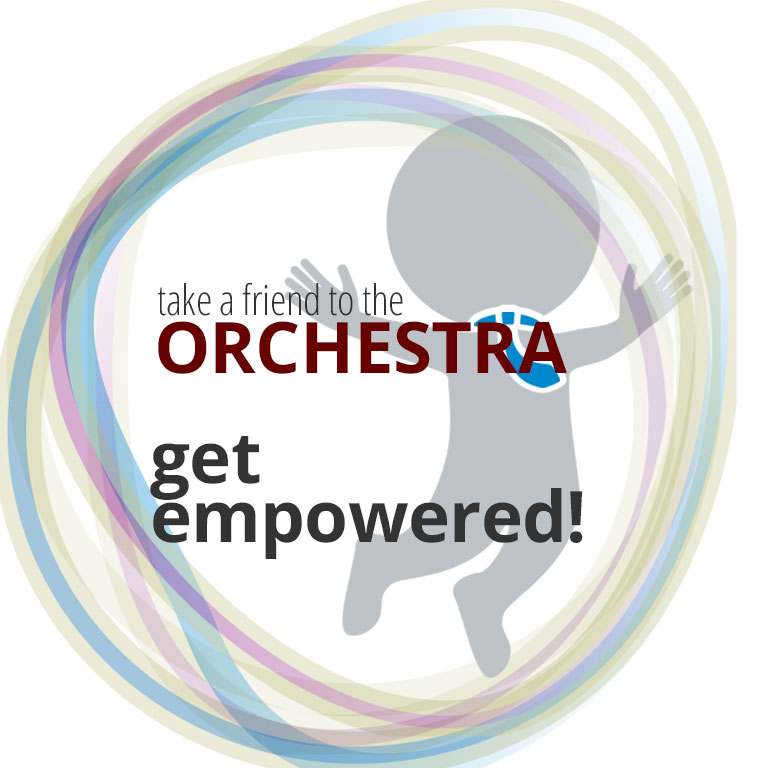Since we all can’t be professional musicians or veteran orchestra managers with the confidence to take someone to an orchestra concert and show them the ropes it pays to look at things from the eyes of someone on the outside looking in.
The average experienced orchestra patron probably believes that they don’t know very much about music (although that’s usually not the case) or at least not enough to give them enough confidence to go out and serve as a guide for someone new to the experience.
As such, we are fortunate to have George Hunka (an individual who is not involved with the world of classical music in any professional capacity) offer to share his thoughts. George is a professional playwright with a degree in Languages and Literature from Bard College and has been writing his popular blog, Superfluities, for exactly one month longer than Adaptistration has been up.
Looking in from the outside is good
I was a little taken aback last March when Drew contacted me to take
part in this online symposium. Unlike most of the other participants
you’ll find here, I’m a rank amateur and something of a dilettante when
it comes to classical music; as a performer, my musical experience
extends no further than six years of piano lessons when I was a kid; as
an essayist and writer, my interests lean far more to drama and the
theater than they do to the concert hall. But in my nearly two years of
writing about theater at my blog, I’ve corresponded with several of the
more musically-inclined people in this virtual seminar room, and this
provides me with just a thought or two about broadening the appeal of
classical music concerts to a wider listenership.
As a playwright I tend to hang about with other theater types, and
one of the things I’ve noticed is just how few of them take the time to
investigate other art forms that might inform their own. They visit the
theater frequently, of course, and they watch television and movies,
and they do it because this is part of the job of being an actor or
actress, a stage director or designer. What I miss in talking to many
of them is a familiarity with contemporary visual art or contemporary
concert music. Given the number of qualities they share with musicians,
composers and even visual artists (who put themselves on display, after
all, in galleries), theater practitioners seem marginal because they
don’t
consider the other arts as part of their proper concern.
This is a fairly new issue, I think, and part of the blame has to be
placed on the increasing specialization and professionalization of the
arts. The salon movements in the earlier part of the 20th century led
to a spectacular explosion of art of all kinds: Picasso visited
Gertrude Stein, who was collaborating with Virgil Thompson; George
Grosz was designing sets for Bertolt Brecht, who in turn was
collaborating with Kurt Weill and
George Balanchine; and let’s not
even start with the Dadaists or the Russian constructivist movement in
the years just after the Bolshevik Revolution. In the United States, in
the 1950s, the artists generally grouped under the rubric of "Abstract
Expressionism" relied on poets like Frank O’Hara to popularize their
work, and Morton Feldman was more than
open to inspiration from both
the visual arts ("Rothko Chapel" and Feldman’s music for a contemporary
film on Jackson Pollock spring to mind) and the verbal ("For Frank
O’Hara" and his music for texts by Samuel Beckett).
Maybe our professionalization as artists and performers means that
we find ourselves spending more time meditating on our own disciplines
than on others, but there are no fewer hours in the day now than there
were in the past. Opening our experience as concert music enthusiasts
to practitioners of other art forms doesn’t necessarily mean that we
have to enter into collaborative projects with them. But if we’re going
to broaden the appeal of concert music, one clear avenue for that
effort is to bring artists from different disciplines into our
conversations. And one of the first places to start is with the visit
to a concert hall.
So this month I suggest that you find a friend who has a passionate
attachment to another art form–photography, say, or sculpture, or any
kind of visual art; the theater; literature–and invite them along to a
concert featuring some 20th century piece. Tell them a little bit about
what the piece represents to you, and if you’re familiar with it
already, take the time to mention why you like it or why you don’t; ask
them to listen carefully, as an audience member in a group in a dark
room, not as an iPod-equipped commuter on a subway train. Certainly
some modernist and post-modernist trends in prose writing, or in visual
art, constitute the same kind of formal iconoclasm as some 20th century
music; ask your friend about them, try to relate them to what you know
about musical history. And, most especially, listen to what they have
to say; respond to them from your own perspective.
I doubt this will save the concert hall, frankly. But the chance
always exists that, exposed to this music in this context, your friend
might be willing to investigate concert music further, to draw
parallels between different art forms, to relate them to the culture
that produced them both. And hell, maybe you’ll find yourself visiting
a gallery or two in your off hours. In trying to broaden the audience
for the art form in which we have so much of our lives invested, it’s
only fair that we ourselves broaden the audience for another art form
as well.
– George Hunka


